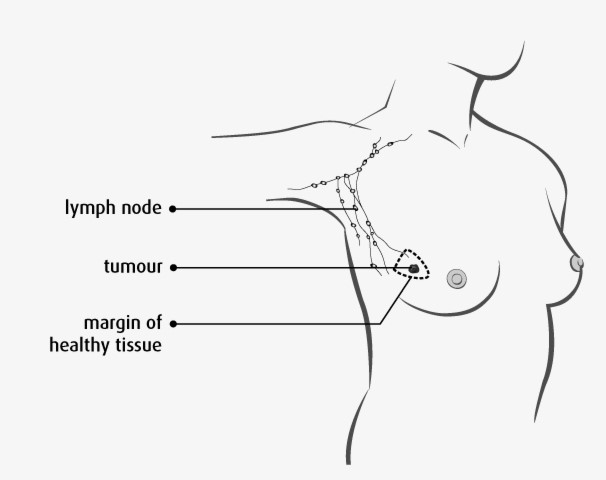Breast cancer is one of the most common forms of cancer affecting women worldwide. In the past, mastectomy (complete removal of the breast) was the primary surgical option for treating breast cancer. However, advancements in medical technology and surgical techniques have led to the development of breast conservation surgery (BCS), also known as lumpectomy or partial mastectomy. This approach aims to remove the cancerous tumor while preserving as much of the breast tissue as possible. This blog will delve into the various options and outcomes associated with breast conservation surgery, providing a comprehensive understanding of this treatment approach.
Understanding Breast Conservation Surgery
Breast conservation surgery involves removing the cancerous tumor along with a surrounding margin of healthy tissue while preserving the majority of the breast. This approach is typically recommended for early-stage breast cancer (stage 0 to stage II), where the tumor is relatively small and localized. The goal of BCS is to achieve oncological safety by removing the cancerous tissue while preserving cosmesis and maintaining breast function.
Options for Breast Conservation Surgery
Several surgical options fall under the umbrella of breast conservation surgery:
- Lumpectomy: Also known as partial mastectomy, lumpectomy involves removing the cancerous tumor along with a margin of healthy tissue. The size of the tumor and the amount of surrounding tissue removed may vary depending on factors such as tumor size, location, and pathological characteristics.
- Oncoplastic Surgery: Oncoplastic surgery combines traditional breast cancer surgery with plastic surgery techniques to achieve optimal cosmetic outcomes. This approach allows for reshaping and restructuring of the breast tissue after tumor removal, resulting in improved symmetry and aesthetics.
- Wire Localization: In cases where the tumor is not palpable or easily visible, wire localization may be used to guide the surgeon during lumpectomy. This involves inserting a thin wire into the breast under imaging guidance to mark the location of the tumor.
- Sentinel Lymph Node Biopsy: In addition to tumor removal, sentinel lymph node biopsy may be performed to assess whether cancer has spread to nearby lymph nodes. This minimally invasive procedure involves injecting a tracer dye or radioactive substance near the tumor to identify the sentinel lymph node, which is then removed and examined for the presence of cancer cells.
Outcomes and Benefits of Breast Conservation Surgery
Breast conservation surgery offers several benefits compared to mastectomy, including:
- Preservation of Breast Appearance: By preserving the majority of the breast tissue, BCS can help maintain breast shape and symmetry, resulting in improved cosmetic outcomes.
- Improved Quality of Life: Preserving the breast can have a positive impact on a woman’s body image and self-esteem, leading to improved quality of life and psychological well-being.
- Minimal Disruption to Daily Life: BCS is typically associated with shorter recovery times and less post-operative pain compared to mastectomy, allowing patients to resume normal activities sooner.
- Equivalent Survival Rates: Numerous studies have demonstrated that breast conservation surgery followed by radiation therapy is associated with equivalent long-term survival rates compared to mastectomy for early-stage breast cancer.
Considerations and Risks
While breast conservation surgery offers many advantages, it may not be suitable for all patients. Factors such as tumor size, location, and pathological characteristics, as well as patient preferences and overall health, must be taken into account when determining the most appropriate treatment approach. Additionally, BCS is typically followed by radiation therapy to reduce the risk of local recurrence, which may be a consideration for some patients.
Like any surgical procedure, breast conservation surgery carries risks and potential complications, including:
- Incomplete Tumor Removal: There is a risk of leaving behind residual cancer cells if the tumor is not completely excised during surgery, leading to the need for additional treatment.
- Cosmetic Changes: While efforts are made to preserve breast appearance, some degree of asymmetry or changes in breast shape may occur following surgery.
- Radiation Side Effects: Radiation therapy, which is often administered following BCS, can cause side effects such as skin irritation, fatigue, and changes in breast appearance.
- Risk of Recurrence: While BCS is associated with low rates of local recurrence, there is always a risk that cancer may return to the treated breast or nearby lymph nodes.
Conclusion
Breast conservation surgery has revolutionized the treatment of early-stage breast cancer, offering women the opportunity to preserve their breasts while effectively treating their disease. With various surgical options available, including lumpectomy, breast oncoplasty surgery, and wire localization, patients have access to personalized treatment approaches tailored to their individual needs and preferences.
By understanding the options and outcomes associated with breast conservation surgery, women can make informed decisions about their breast cancer treatment, ultimately improving their quality of life and long-term outcomes. As research and technology continue to advance, breast conservation surgery will remain a cornerstone of breast cancer treatment, providing hope and healing for women around the world.



